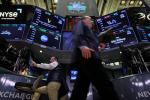
- All Instrument Types
- Indices
- Equities
- ETFs
- Funds
- Commodities
- Currencies
- Crypto
- Bonds
- Certificates
Please try another search

11-Year Bull Market Nears An End? ETFs That Should Survive

It’s an irony that Wall Street cratered massively on Mar 9 this year, the same day on which U.S. stocks bottomed out and had staged an astral rally 11 years ago. The collapse of Lehman Brothers in September 2008 wreaked havoc on Wall Street. On Mar 7, 2009, the S&P 500 touched a bear market nadir of 666.79, only to record a superb rally starting Mar 9, 2009.
The S&P 500, which declined about 47% from Mar 9, 2008 to Mar 9, 2009, has gained about 306% in the past 11 years (as of Mar 9, 2020). Dow Jones Industrial Average and Nasdaq Composite were up 264.3% and 526.7%, respectively, over the time frame.
The S&P 500 is now down 19.1% from its all-time high of 3393.52. If it keeps spiraling down, with the S&P 500 slipping 20% from its record high, the bull market that began in March 2009 will officially be over.
On Mar 9, 2020, the blue-chip Dow Jones recorded its largest points decline ever (down 7.8%), with the S&P 500 (down 7.6%) and the Nasdaq (down 7.8%) seeing one of the worst days since the financial crisis. Crude oil prices plunged 25% after the world's key producing countries failed to reach an output cut deal.
Since World War II, we have seen 12 bear markets with an average decline of 32.5%. The bear markets have persisted for 14.5 months on average, per CNBC.
Will Bulls Keep Running in 2020?
Dovish central banksamid a slowing global economy have aided global stocks so far.Two-year long U.S.-China trade tensions have eased considerably this year. However, the coronavirus outbreak and its spread to various parts of world sent global markets into a tailspin.
Though central banks are cutting rates further, the move seems less likely to help contain the latest market crash as it is a result of supply-shock and not demand (read: Emergency Fed Cut Less Effective: ETFs That Should Survive).
Notably, buybacks kept stocks going in the latest bull market. This corporate activity kept the market going from 2015 through mid-2016, when S&P 500 earnings growth declined for five successive quarters. But U.S. companies authorized $122 billion in repurchases through February, highlighting a roughly 50% decline from the year-ago period. This doesn’t bode well for the market.
Corporate earnings growth is under pressure. Goldman Sachs (NYSE:GS) now estimates that U.S. companies will report zero earnings growth in 2020 due to the virus scare. Plus, election uncertainty in the United States is a concern.
Now all depends on the progression of the virus. “If the weakness that we're inevitably going to get is sufficient enough to go into a recession” we might see a bear market, may be a gentle one, per Liz Ann Sonders, chief investment officer of Charles Schwab (NYSE:SCHW).
Against this backdrop, we would like to note a few ETFs that could prove to be good picks for 2020.
ProShares Long Online/Short Stores ETF CLIX
Internet stocks and ETFs should be better protected than the broader sector as these have less to do with human contact. The coronavirus scare probably should favor the online retailing industry as any kind of lockdown and self-imposed quarantine should boost demand for online shopping and other kinds of Internet activities. CLIX lost 2.7% on Mar 9 against 7.6% drop of the S&P 500 (read: Is Coronavirus a Boon for Online Retail ETFs?).
SPDR Wells Fargo Preferred Stock (NYSE:PSK) ETF (TSX:PSK)
Not only do the preferred stocks offer considerably higher yields (often exceeding 5%), they also provide an opportunity for capital appreciation. They are hybrid securities having the characteristics of both debt and equity. The preferred stocks pay stockholders a fixed, agreed-upon dividend at regular intervals, like bonds. The fund yields 5.50% annually and lost only 2.4% on Mar 9. It yields 5.39% annually(read: 5 Preferred Stock ETFs Yielding 5% or More & Losing Little).
Consumer Staples Select Sector SPDR ETF (NYSE:XLP) XLP)
It is a non-cyclical sector that is poised to remain well-placed amid volatile markets. The fund XLP, which yields 2.63% annually, retreated about 4.4% on Mar 9 (read: "At Least 3 Rate Cuts" by December? Sector ETFs to Play).
iShares Genomics Immunology and Healthcare ETF IDNA
It is needless to say, such a virus attack will boost demand for vaccines, medicines and equipment. The disease will likely give more business to healthcare providers as well. As a result, IDNA should be followed closely. It lost 6.2% on Mar 9, lesser than the S&P 500 (read: Wall Street in Correction: 4 Sector ETFs Unscathed in February).
Want key ETF info delivered straight to your inbox?
Zacks’ free Fund Newsletter will brief you on top news and analysis, as well as top-performing ETFs, each week. Get it free >>
SPDR Wells Fargo (NYSE:WFC) Preferred Stock ETF (PSK): ETF Research Reports
ProShares Long Online/Short Stores ETF (CLIX): ETF Research Reports
iShares Genomics Immunology and Healthcare ETF (IDNA): ETF Research Reports
Original post
Zacks Investment Research
Related Articles

Nvidia’s muted reaction keeps tech on edge, with chipmakers in focus. Nasdaq’s 20980-21000 support holds—for now. A break could mean trouble. With Nvidia done, GDP today and...

Nvidia’s earnings beat didn’t erase investor concerns over slowing growth. Soft Q1 guidance and valuation worries may limit the stock’s upside. Weak network and gaming sales...

Shares of Etsy (NASDAQ:ETSY) are down approximately 7% since the company reported earnings on February 19. Concerns over slowing growth are overriding revenue and earnings that...
Are you sure you want to block %USER_NAME%?
By doing so, you and %USER_NAME% will not be able to see any of each other's Investing.com's posts.
%USER_NAME% was successfully added to your Block List
Since you’ve just unblocked this person, you must wait 48 hours before renewing the block.
I feel that this comment is:
Thank You!
Your report has been sent to our moderators for review




Add a Comment
We encourage you to use comments to engage with other users, share your perspective and ask questions of authors and each other. However, in order to maintain the high level of discourse we’ve all come to value and expect, please keep the following criteria in mind:
Enrich the conversation, don’t trash it.
Stay focused and on track. Only post material that’s relevant to the topic being discussed.
Be respectful. Even negative opinions can be framed positively and diplomatically. Avoid profanity, slander or personal attacks directed at an author or another user. Racism, sexism and other forms of discrimination will not be tolerated.
Perpetrators of spam or abuse will be deleted from the site and prohibited from future registration at Investing.com’s discretion.